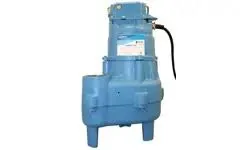English
- Afrikaans
- Albanian
- Amharic
- Arabic
- Armenian
- Azerbaijani
- Basque
- Belarusian
- Bengali
- Bosnian
- Bulgarian
- Catalan
- Cebuano
- Corsican
- Croatian
- Czech
- Danish
- Dutch
- English
- Esperanto
- Estonian
- Finnish
- French
- Frisian
- Galician
- Georgian
- German
- Greek
- Gujarati
- Haitian Creole
- hausa
- hawaiian
- Hebrew
- Hindi
- Miao
- Hungarian
- Icelandic
- igbo
- Indonesian
- irish
- Italian
- Japanese
- Javanese
- Kannada
- kazakh
- Khmer
- Rwandese
- Korean
- Kurdish
- Kyrgyz
- Lao
- Latin
- Latvian
- Lithuanian
- Luxembourgish
- Macedonian
- Malgashi
- Malay
- Malayalam
- Maltese
- Maori
- Marathi
- Mongolian
- Myanmar
- Nepali
- Norwegian
- Norwegian
- Occitan
- Pashto
- Persian
- Polish
- Portuguese
- Punjabi
- Romanian
- Russian
- Samoan
- Scottish Gaelic
- Serbian
- Sesotho
- Shona
- Sindhi
- Sinhala
- Slovak
- Slovenian
- Somali
- Spanish
- Sundanese
- Swahili
- Swedish
- Tagalog
- Tajik
- Tamil
- Tatar
- Telugu
- Thai
- Turkish
- Turkmen
- Ukrainian
- Urdu
- Uighur
- Uzbek
- Vietnamese
- Welsh
- Bantu
- Yiddish
- Yoruba
- Zulu
Telephone: +86 13120555503
Email: frank@cypump.com
Dec . 24, 2024 20:13 Back to list
Ejector Pit Design and Pumping System Considerations for Enhanced Efficiency
Understanding Ejector Pits and Pumps A Vital Component in Waste Management
In the modern world, efficient waste management is crucial for maintaining environmental health and ensuring the functionality of urban systems. Among the various components that facilitate effective waste disposal, ejector pits and pumps play a significant role. These systems are primarily designed to manage wastewater and sewage, particularly in areas where gravity drainage is not feasible.
What is an Ejector Pit?
An ejector pit, also known as a sewage ejector pit, is a specially designed receptacle for collecting and storing wastewater from drainage systems. Commonly situated in basements or lower levels of buildings, ejector pits receive effluent that cannot naturally flow to a septic tank or municipal wastewater system due to insufficient elevation. The pit typically contains a pump and an array of piping that directs the wastewater away from the site.
The ejector pit operates by utilizing the principle of water displacement. When wastewater fills the pit to a predetermined level, a float switch triggers the ejector pump. This pump then expels the wastewater through a discharge pipe, allowing it to travel to an appropriate waste treatment facility. This process not only prevents flooding but also ensures that sewage is disposed of in a safe and sanitary manner.
The Role of Ejector Pumps
Ejector pumps are integral to the operation of ejector pits. These pumps come in various designs and capacities, depending on the specific needs of a building or area. They are typically submersible pumps, engineered to withstand continuous contact with wastewater, often featuring corrosion-resistant materials to enhance durability.
One of the key functions of an ejector pump is to generate sufficient pressure to move wastewater against gravity. This is crucial for buildings that are situated below the level of the municipal sewer system. Additionally, ejector pumps may be equipped with automatic features that regulate operation based on fluid levels, minimizing the risk of overflow and ensuring optimal performance.
ejector pit and pump

Applications and Benefits
Ejector pits and pumps are essential in several scenarios, particularly in residential homes, commercial buildings, and industrial facilities. For instance, they are widely used in homes with basements, where bathrooms, laundry rooms, and sinks might drain into a lower level. In such cases, ejector systems provide a reliable solution for redirecting wastewater to the main sewer line.
Moreover, these systems are invaluable in areas with challenging topography or in instances where local regulations prohibit gravity-fed sewage systems. By managing wastewater effectively, ejector pits and pumps help to maintain hygiene and public health while minimizing the environmental impact of sewage disposal.
In addition to their functional benefits, ejector systems can contribute to energy efficiency. Advanced modern pumps may integrate smart technology for monitoring performance and energy consumption, ensuring that they operate within optimal parameters.
Maintenance Considerations
Like any mechanical system, ejector pits and pumps require regular maintenance to function properly and efficiently. Routine inspections are critical to identify potential issues before they escalate, such as clogs, mechanical failures, or system overloads. Homeowners and facility managers should also be aware of the signs of inefficiency, including unusual noises or frequent cycling of the pump.
Conclusion
In summary, ejector pits and pumps are vital components in the infrastructure of modern waste management systems. Their ability to effectively manage wastewater, particularly in gravity-deficient scenarios, underscores their importance in maintaining sanitary conditions and protecting the environment. As urbanization continues to increase, the significance of these systems will only grow, making their understanding and maintenance crucial for sustainable growth and public health.
-
ISG Series Vertical Pipeline Pump - Chi Yuan Pumps Co., LTD.
NewsJul.30,2025
-
ISG Series Vertical Pipeline Pump - Chi Yuan Pumps Co., LTD.|energy-efficient fluid handling&industrial durability
NewsJul.30,2025
-
ISG Series Vertical Pipeline Pump - Chi Yuan Pumps | Advanced Engineering&Industrial Efficiency
NewsJul.30,2025
-
ISG Series Pipeline Pump - Chi Yuan Pumps | High Efficiency, Energy Saving
NewsJul.30,2025
-
ISG Series Vertical Pipeline Pump-Chi Yuan Pumps|High Efficiency&Reliable Performance
NewsJul.29,2025
-
ISG Series Vertical Pipeline Pump|High Efficiency&Low Noise
NewsJul.29,2025










